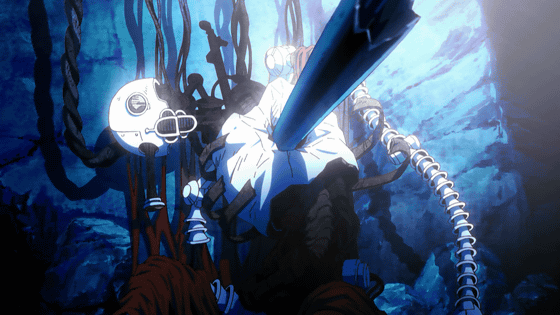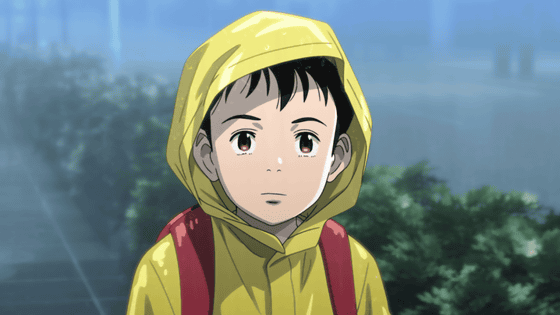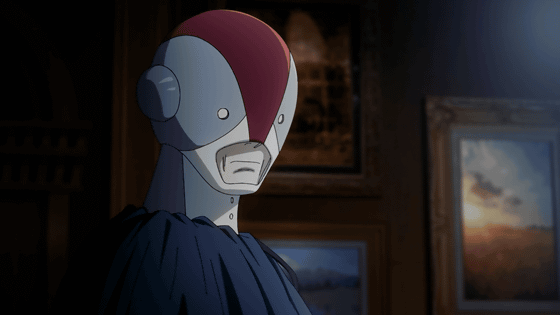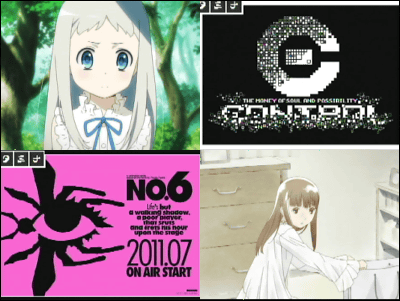Interview with manga artist Naoki Urasawa, the anime 'PLUTO' incorporates 'this future society I wanted to depict'

The manga ``PLUTO'', which is a remake of the episode ``The Largest Robot on Earth'' from ``Astro Boy'', which manga artist Naoki Urasawa says is ``a manga that sits at the center of all manga in my heart'', has been made into an anime and released on Netflix. It will be distributed from today, October 26, 2023 (Thursday).
This time, I had the opportunity to interview Mr. Urasawa in conjunction with the broadcast, so I asked him about his involvement in the production of this anime and his thoughts on ``The Largest Robot on Earth.''
PLUTO | Netflix Official Site
Mr. Urasawa also appeared on the Netflix stage at AnimeJapan 2023 held in March 2023, where information about 'PLUTO' was announced.
Naoki Urasawa says ``I'm more excited'' about the anime ``PLUTO'' Netflix stage report, also includes information on ``Ooku'', ``Yakitori'', and ``Onmyoji'' - GIGAZINE

GIGAZINE (hereinafter referred to as G):
I read all the episodes of ``PLUTO'' when it was serialized, and I have watched all the episodes of this work as well. Thank you for your continued support today.
Naoki Urasawa (hereinafter referred to as Urasawa):
thank you.
G:
When I was watching the anime, I noticed that Urasawa's name was credited as 'Creative Advisor' in the staff roll at the end. What kind of work was it?
Urasawa:
The basic idea was to follow the original story, but we set a time limit of about one hour per episode, so there were some parts that had to be cut. He showed me the plot from the beginning and gave advice such as ``I don't want you to cut this part'' or ``Is it possible to cut this part?'' Regarding character design, I gave advice such as, ``Maybe it's better to make the body a little thicker?'' and ``This person should have a more hunched back.'' Regarding art, I also gave advice such as ``This room should be futuristic,'' and ``Make the space wider.'' I remember telling him that.
G:
Did you change the character design because it would be better to make it into an animation?
Urasawa:
I'm an amateur when it comes to anime, so when I look at the height comparison chart in the character setting book, everyone stands pretty straight. When I saw that, I said, ``This person's posture doesn't look that good,'' or I made notes about certain parts of the performance, such as ``It's better if his face isn't so grim.''
Gezihito, the detective who leads the work

G:
For example, do you create character setting documents yourself so that your assistants can help you? Or will you just move forward based on the information in your head?
Urasawa:
In my case, I don't let anyone touch anything about the person. That only comes out of my pen.
G:
I see…….
Urasawa:
Also, you may think this is a lie, but there is a destroyed robot named Blau. It's broken and doesn't move, but it's not a copy; it's all drawn by me, stroke by stroke.
G:
Is that so!
Browse in the anime “PLUTO”

Urasawa:
Some people draw out the character settings to a certain extent, but if you leave it to an assistant, they will draw the character as they were originally set. However, serialized manga are not announced until everything is completed, so both the author and the characters grow as they develop their acting skills while drawing. It is often said that the appearance of the characters changes from when the series started, but I think this is true from a manga perspective.

G:
I see. Is there a way to intentionally grow the characters? Or do you feel like you'll grow as you notice it?
Urasawa:
It's more of a 'when I feel like it' kind of thing. As the character, whose setting was created before the first episode, says various lines and makes various facial expressions, you start to think, ``This person also makes such a face.'' That's something you can only understand when you write a drama. That's how the character is formed, so the fact that the character is different in episode 10 and episode 30 means that the character has grown through experience.
G:
I see. This time, in the anime, Urasawa is credited as the composer for ``Mother's Humming Song'' and ``Duncan's Piano Song.'' Did you have a certain idea of the song at the time of serialization? Or did you think about it again because of this story?
Urasawa:
The image was vague. Producer Maruyama said, ``Mr. Urasawa probably knows this song best, so please tell me what kind of song it is.'' I said, ``I have it in my head,'' so I made a demo recording and sent it to him. did. At the time of serialization, I couldn't create pictures unless it was a song, so I created the scenery and characters based on a rough idea. I had a general idea of that, so when Mr. Maruyama contacted me, I felt like I was re-arranging it.
North No. 2 works as a butler under musician Paul Duncan.

G:
I see. Since the long-awaited anime adaptation was made after the end of the 'PLUTO' series, were there any parts where you looked back and felt, 'It would have been better to do this this way,' or 'This part was really well done?'
Urasawa:
When it became an anime and CG and other things were introduced, I was grateful that they made the images look like the future. This is still drawn in analog. It's great to hear people say, ``I wanted to depict this future society.''
G:
Mr. Urasawa's YouTube channel even had an episode where he talked about tablets. I think there are a lot of parts in this anime that are drawn digitally, but are there any parts of it that make you think, ``This kind of thing can be done too''?
Urasawa:
Well...it's hard to do something like that without studying, and I don't study unless it's really necessary. When that happens, I end up drawing it by hand, thinking, ``That's enough, just draw it.'' (LOL)
G:
(lol)
Urasawa:
However, this time I had a small request: I don't want it to look too CG, and I want it to retain the goodness of traditional Japanese animation.
G:
If you follow NHK's `` Manben '' for a long time, you get the feeling that Mr. Urasawa is very particular about where he draws the lines, and where he starts. What is it?
Urasawa:
I think that's the core of why I've been drawing manga ever since I was a child. Whether you were able to draw a good line or not, and how close you were to the wonderful lines drawn by your predecessors. The joy I felt when I was able to draw it. The expressions and emotions that could be drawn because of the lines drawn. I think that's really why I've been drawing manga for so many years.
G:
With digital technology, is it difficult to draw such a line, or are there different sensibilities and a long way to go in terms of what you want?
Urasawa:
When I draw lines on a so-called tablet, after all these years I've gotten used to the feeling of ink coming out of the pen tip, and then I think, ``Something's wrong,'' and the feeling of ink coming out of the pen tip and onto paper. The moment it is drawn, it becomes a ``line of determination'' that means there is no going back.
If you quickly draw a line on your tablet, you can immediately undo it if you feel like it. That would no longer be the ``line of determination.''
G:
It's different from a one-shot line.
Urasawa:
My paintings are a collection of lines that I make up my mind to make, so from my perspective, if I can undo it, I feel like the painting won't turn out well. If I had to do it over and over again, I wouldn't be able to make up my mind. I feel like if I don't draw the line of determination every time, I won't be able to draw well.
G:
I see……. Artificial intelligence and electronic brains appear in this work 'PLUTO'. In the real world, various types of artificial intelligence have emerged. As a manga artist, is there anything you wish there was AI like this or if there was a way to use it effectively?
Urasawa:
At first, I had a rather negative view of AI, but the other day, when I was looking at the pictures generated by it, I started to notice something that made me think, 'That's a nice line,' as I said earlier. There is. The moment I thought, ``This is a good line,'' I was horrified. ``I just thought that the AI line was great, right?''
G:
What kind of feelings do you have when you say, 'That's a good line'?
Urasawa:
It's been about 60 years since I started drawing, and I've lived my life relying on what I thought was a good line. The moment that person thinks that the lines in the AI-generated picture are ``good''...the only thing I can say about it is that it gives me chills.
G:
Do you have a feeling that AI will improve in the future? Or do you think that the fact that something like that can be produced even by chance is a threat?
Urasawa:
Rumor has it that they are evolving day by day. It is said that they are evolving faster than humans expected. Considering that, I thought that the drama of 'PLUTO' was not out of place at all.
G:
Indeed, I think we are heading in almost the same direction.
Urasawa:
This is kind of scary because it means that things are evolving at a tremendous speed, which is beyond what humans expected. I wonder what will happen next.
G:
'Drawing AI' doesn't appear in PLUTO, but I wonder if that's because it wasn't something that came to mind at the time, or if there wasn't room for it.
Urasawa:
Well...I guess my pride as a painter prevented me from drawing it (lol)
G:
Oh my God! (Laughs) Mr. Urasawa was 5 years old when he encountered the ``largest robot on earth,'' and says that ``it was the image of the manga that sat in the center of all the manga in my mind.'' What was so special about it? Was that the reason why Urasawa boy's heart was captured?
Urasawa:
Yes, 'The Largest Robot on Earth' was announced in 1964. Even though I was only 4 or 5 years old, I thought, ``This is the first time in my life that I've felt such sadness.'' Gradually, they begin to understand the true nature of the sad feelings they felt for the first time in their lives, but it is about hating each other and winning. The emptiness of fighting and winning, even if it means good, punishment, or evil. That's probably what the ``largest robot on earth'' was trying to convey.
I decided to remake it in 2003, when I turned 43, and before I knew it, the message was still valid to the world. This year, 20 years later, in 2023, that message is even closer to you as a reality.
The reason I started drawing the PLUTO manga was because 2003 was the birth year of Dr. Tenma's creation of Astro Boy, and when I was offered to join the manga industry because everyone was doing something. As someone who experienced something that huge when I was a year old, I felt that unless I did something like work on ``The Largest Robot on Earth,'' it wouldn't be a tribute or something like that. So I said to the editors, ``Isn't there a manga artist with the guts to take on the challenge of remaking ``The Largest Robot on Earth?'' but everyone said, ``Do it yourself.'' I refused, saying, ``That's ridiculous, I'm not equipped to do it,'' but as I talked about it with Mr. Nagasaki, we came up with something similar to the basics of ``PLUTO,'' and I said, ``This would be an interesting story.'' I thought, ``It's a mess...I don't want to give it to anyone,'' so I sent some rough sketches, sketches, and notes to Makoto Tezuka.
At that time, there hadn't been any remakes of Osamu Tezuka's works, so I thought it would never happen, so I just sat there, but one day, Makoto-san invited me to dinner, and towards the end of the meal, I said, ``Okay, Urasawa. I was wondering what he was talking about, but he said, ``I'm sure it's PLUTO!''. That's how I felt, so rather than saying ``I'm going to do it positively'', I say ``I've decided to do it'' (lol)
G:
It seemed like I was being cornered more and more (lol)
Urasawa:
I was at a time when my health was failing, and the serialization of ``20th Century Boys'' had stopped midway through, and I was wondering if I would be able to draw anymore. So I started drawing because I thought, ``I might be able to draw once a month,'' but after I started drawing PLUTO, I was able to get back into the shape of drawing manga, which may be because God healed me. is.
G:
Were there any parts that were difficult during the series?
Urasawa:
Looking back on it now, it may have been a difficult task, but since the original work by Mr. Tezuka was in place, I don't think it was that difficult in terms of ``just going in the direction I was led.'' The most difficult thing was before I started drawing, especially when I started drawing the first story, my whole body was shaking, and now that I think about it, Naoki Urasawa, a boy who was a fan of Tezuka Sensei, said to me, ``You're such a bad guy.'' I think the curse that came over me was, ``If I draw it, I'm not going to get away with it.'' I think it exploded inside me.
G:
It's tough....
Urasawa:
Honestly, no matter how many insults I receive, there is nothing worse than that. One more thing: I somehow felt like Tezuka-sensei was watching me from above. They say, ``Mr. Urasawa, that's not true.''
G:
That's what it felt like... The work has been beautifully visualized, so I would like many people to see it. Thank you for today.
Urasawa:
Yes, please look forward to the anime “PLUTO”! I think this work will not disappoint everyone's expectations!
The Netflix series 'PLUTO' will be available on Netflix from 16:00 on Thursday, October 26, 2023.
'PLUTO' Trailer - Netflix - YouTube
Related Posts:






